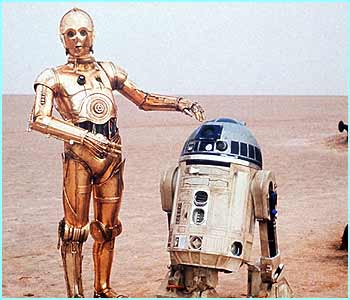A Brief History of Science Fiction Film Music
References, Links, and Works Cited
Created by Jessica Rooney
Last updated 5/1/06


A Brief History of Science Fiction Film Music
The Cold War Era
With the rise of technologic development and heightened political tensions during World War II and the Cold War, science fiction took new prominence and credibility in both literature and film. Musically, science fiction films used this audience acceptance stability to began experimenting with music and sound, especially with new sound and instrumentation technology. One of the most used, newly invented instruments was the theremin synthesizer, an electronic instrument whose fluidity of vibrato and glissandi became important in creating feelings of “otherworldliness and/or threat” (Hayward 9). In this period as well music began to share time with “extended passages of sound effects and electronic music that often overlapped and merged with orchestral scores” (Hayward 11), creating a greater sonic atmosphere that was becoming more essential to the narrative.
During this time science fiction music unrelated to science fiction films was being released to cater to the needs to a large science-fiction enthusiast pool. Albums such as Music for Heavenly Bodies (1959) by Andre Montero and Warren Baker and singles such as Flying Saucers (1951) by the Mello-Tones created lyrical combinations of modern western art music and new electronic instruments, production techniques, and stereo effects (Hayward 11). This period also saw the rise of the filk song, a practice of changing lyrics to well-known songs to fit science fiction themes ( Hayward 11). Such inclusion science fiction themes in everyday life allowed for a greater audience acceptance of techniques used science fiction music, as well as heightened expectations of what science fiction music in films should sound like. This new, comfortable, recognizable yet exploratory age of science fiction film music can be seen in such films as The Day the Earth Stood Still (1951), War of the Worlds (1953), and Forbidden Planet (1956).
